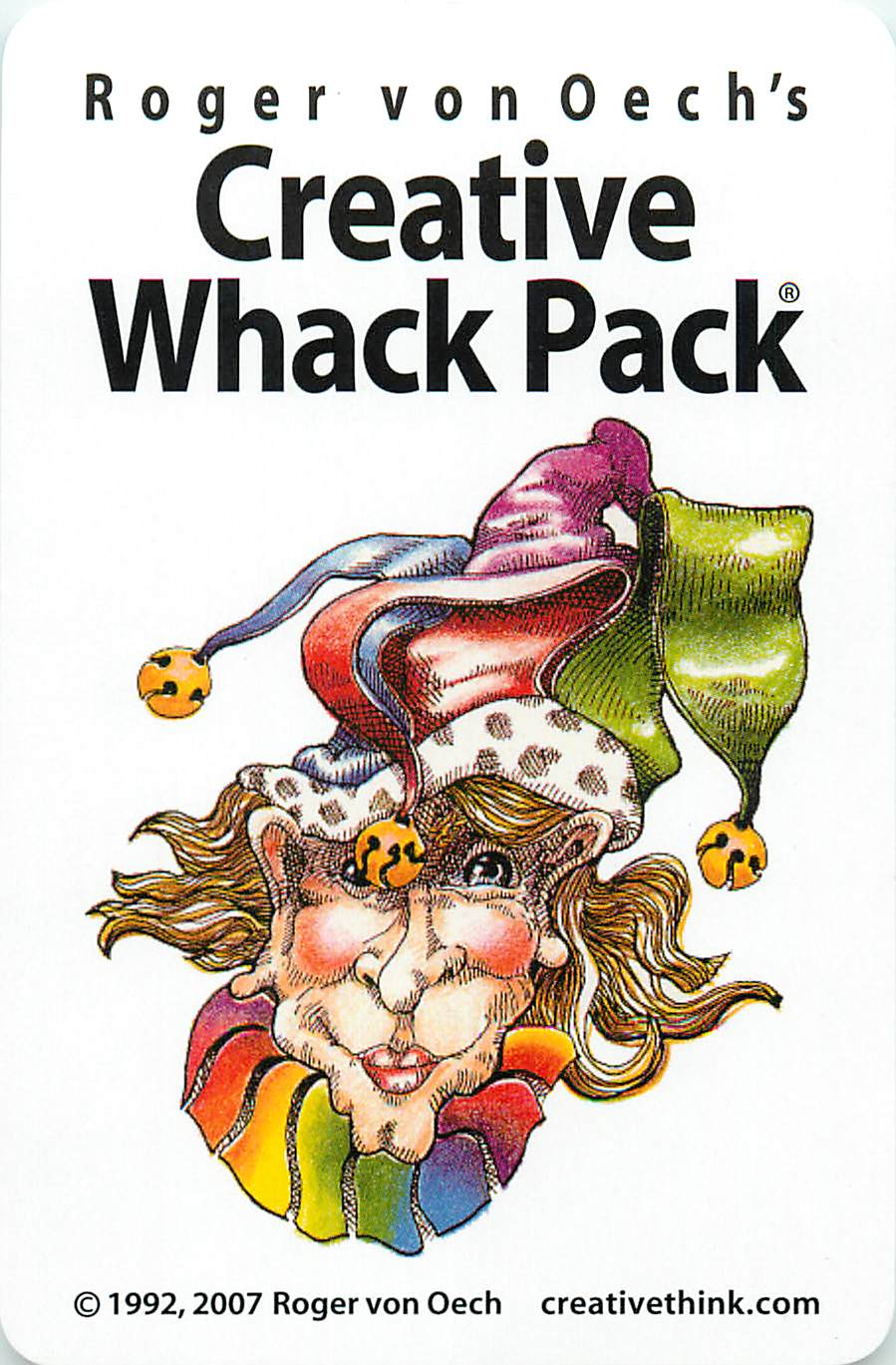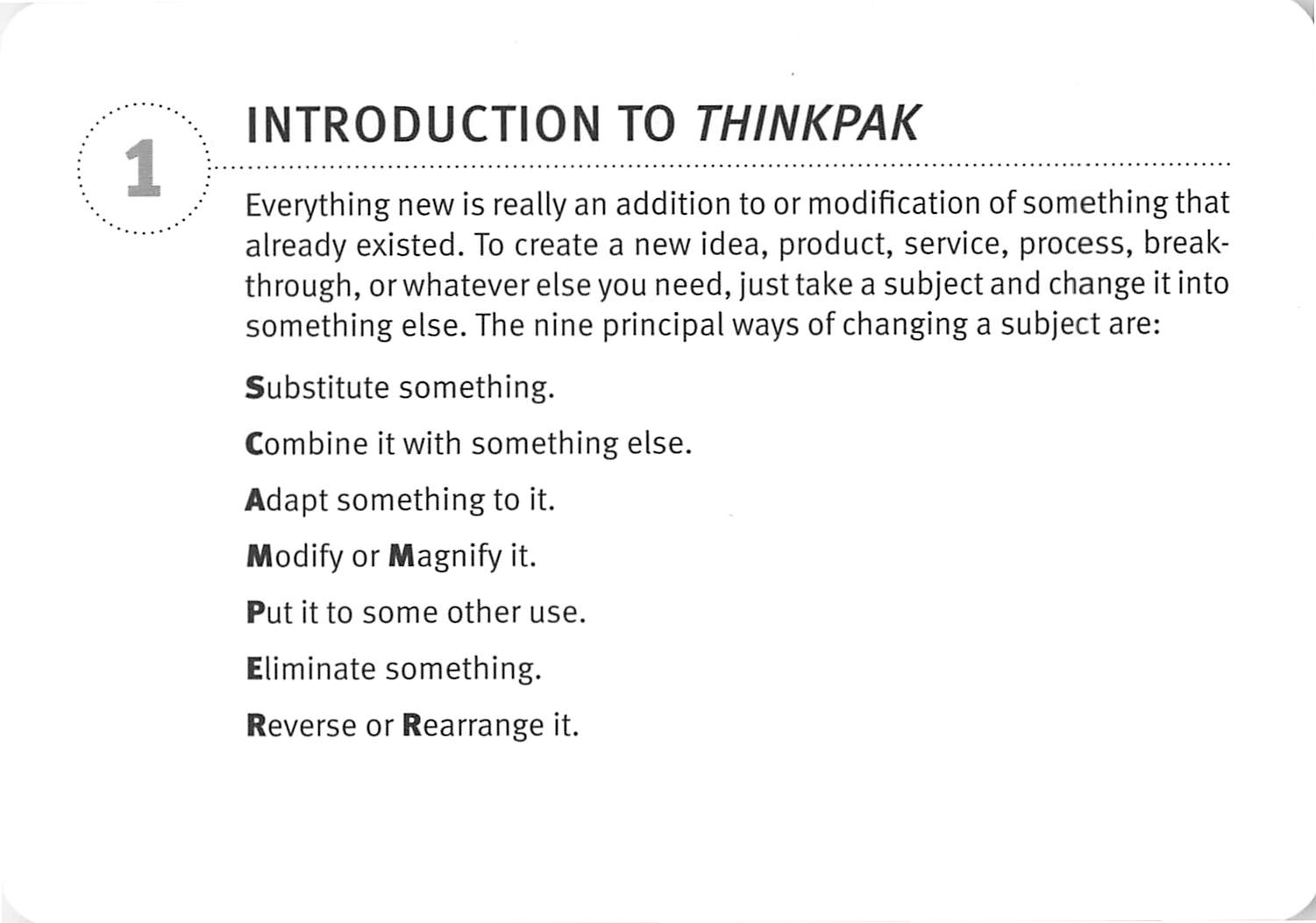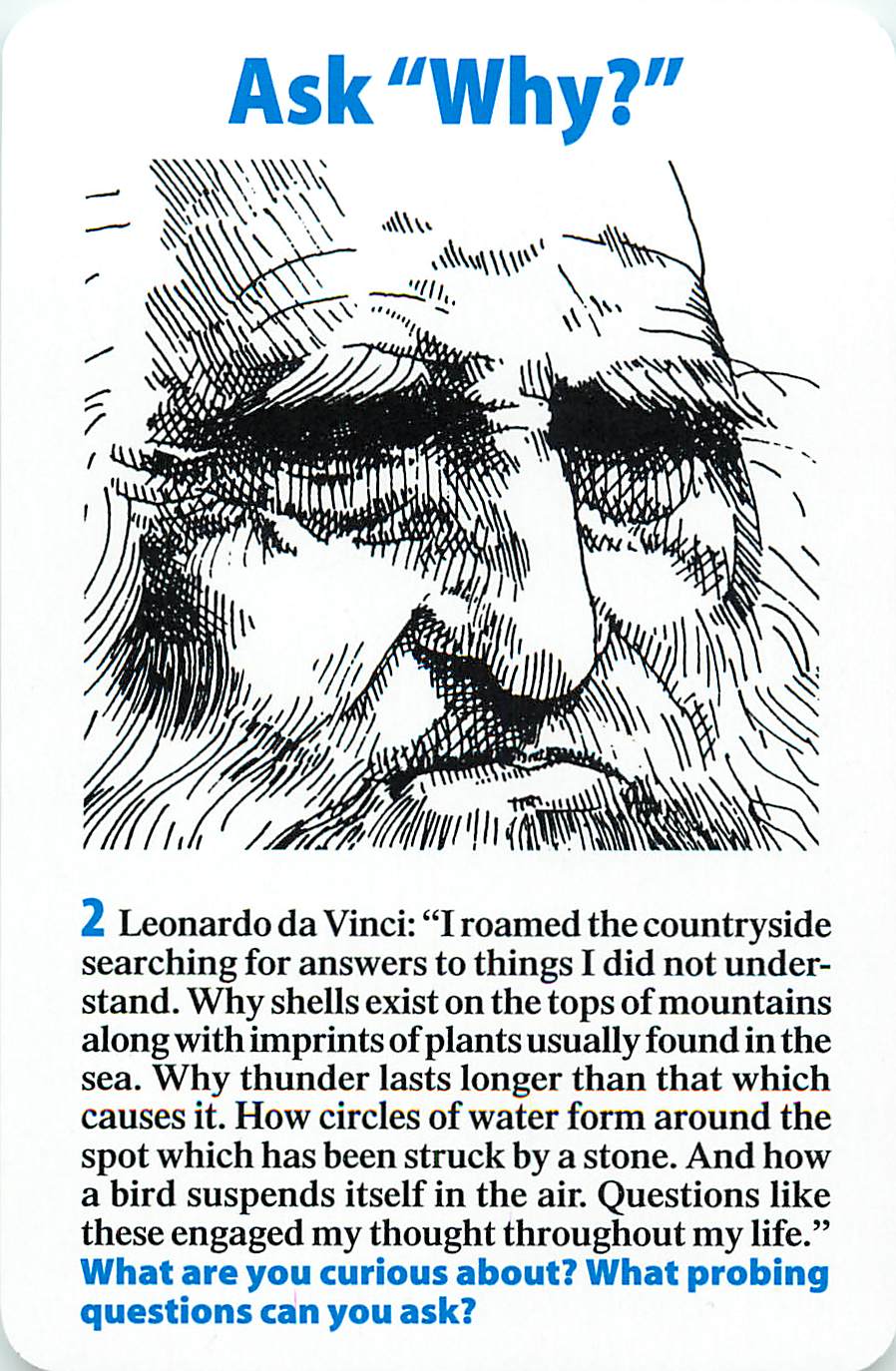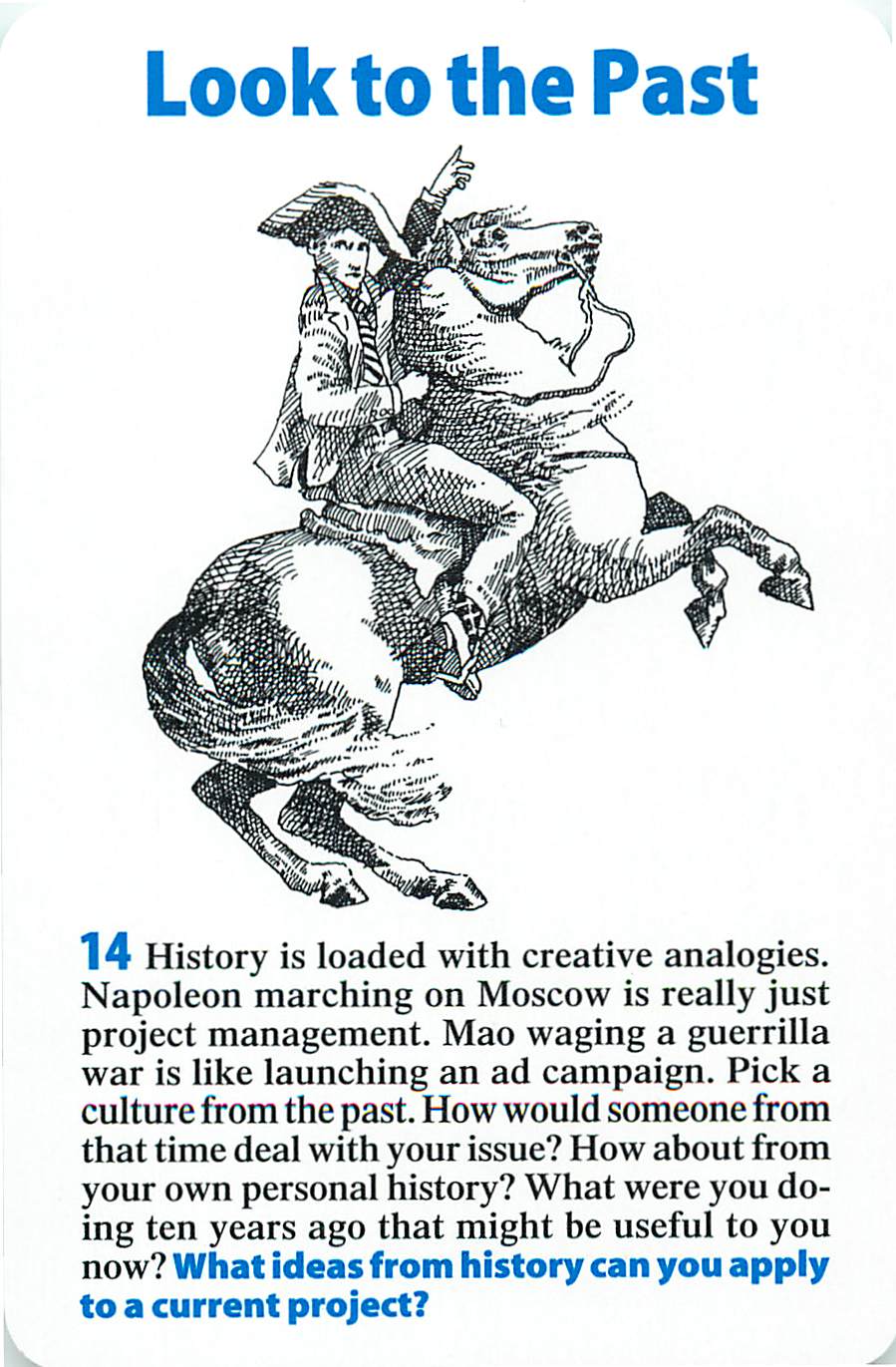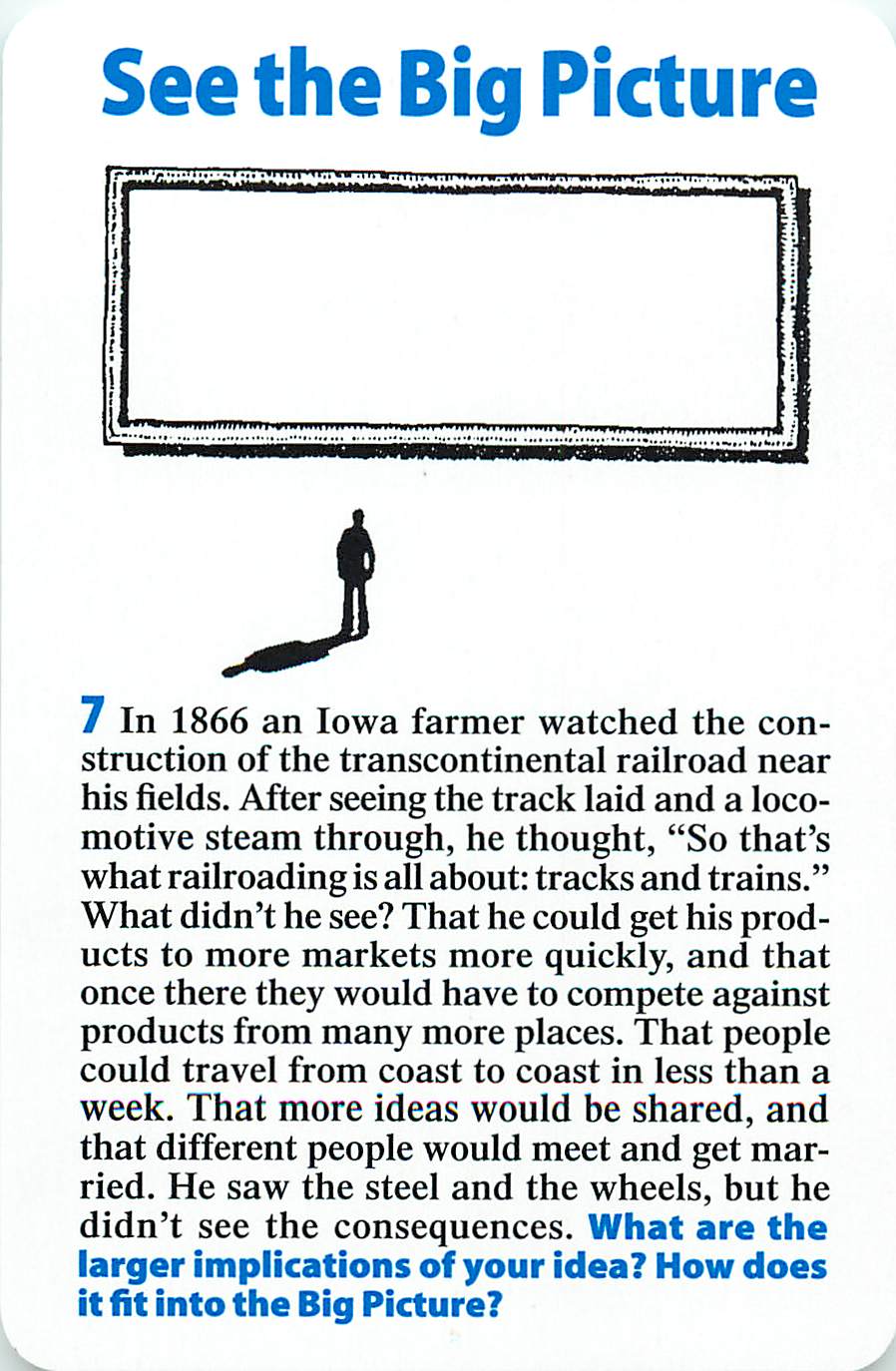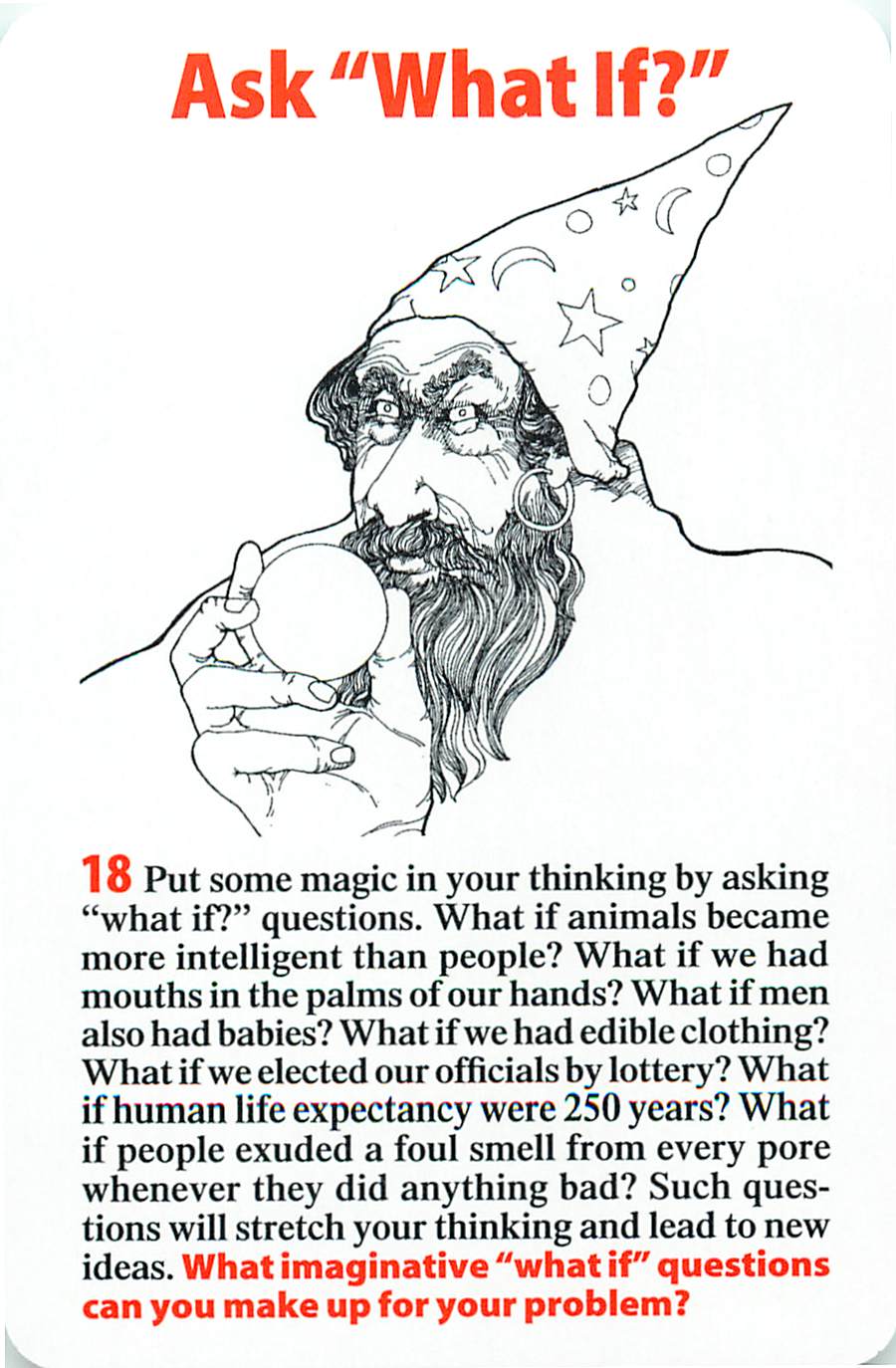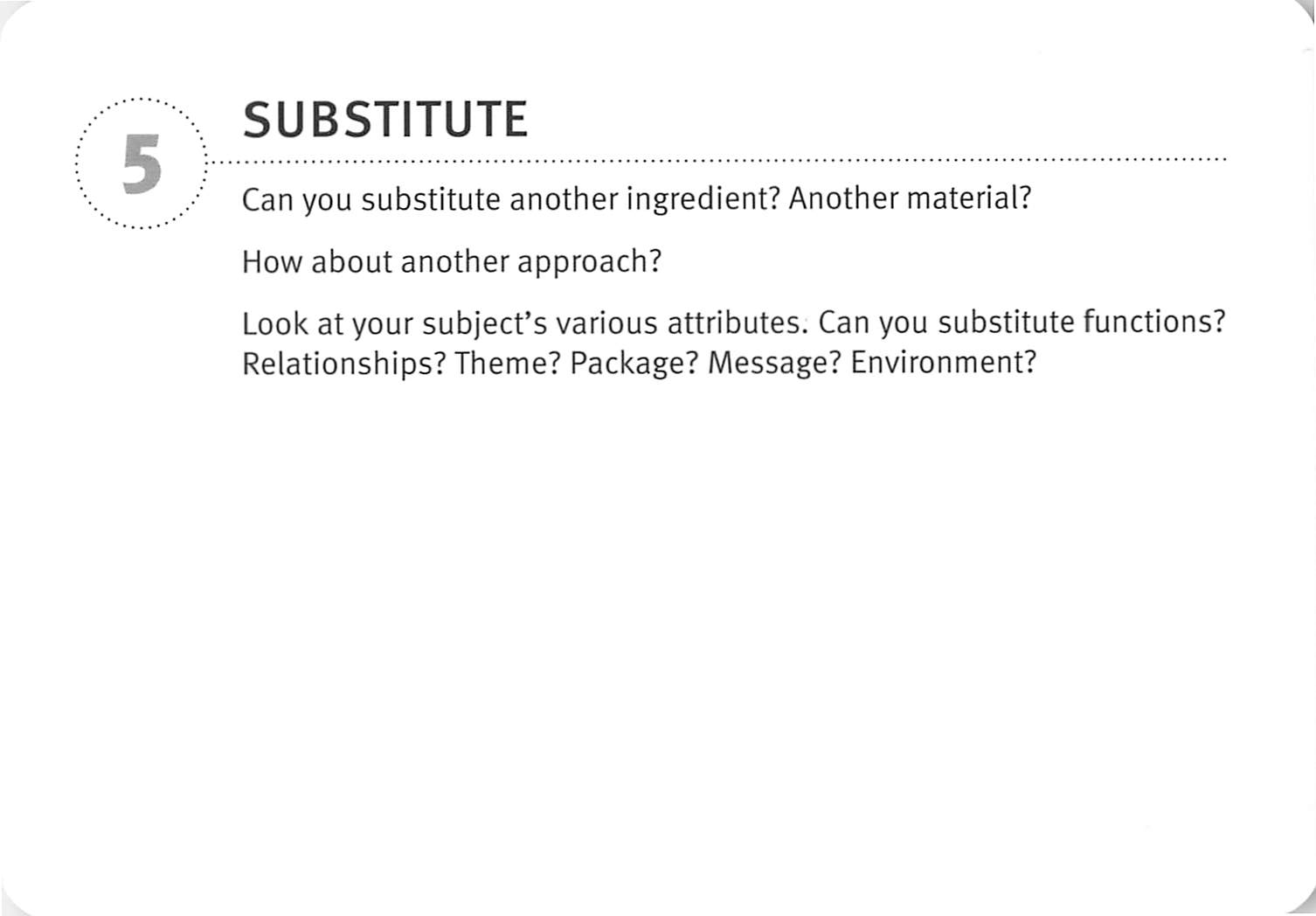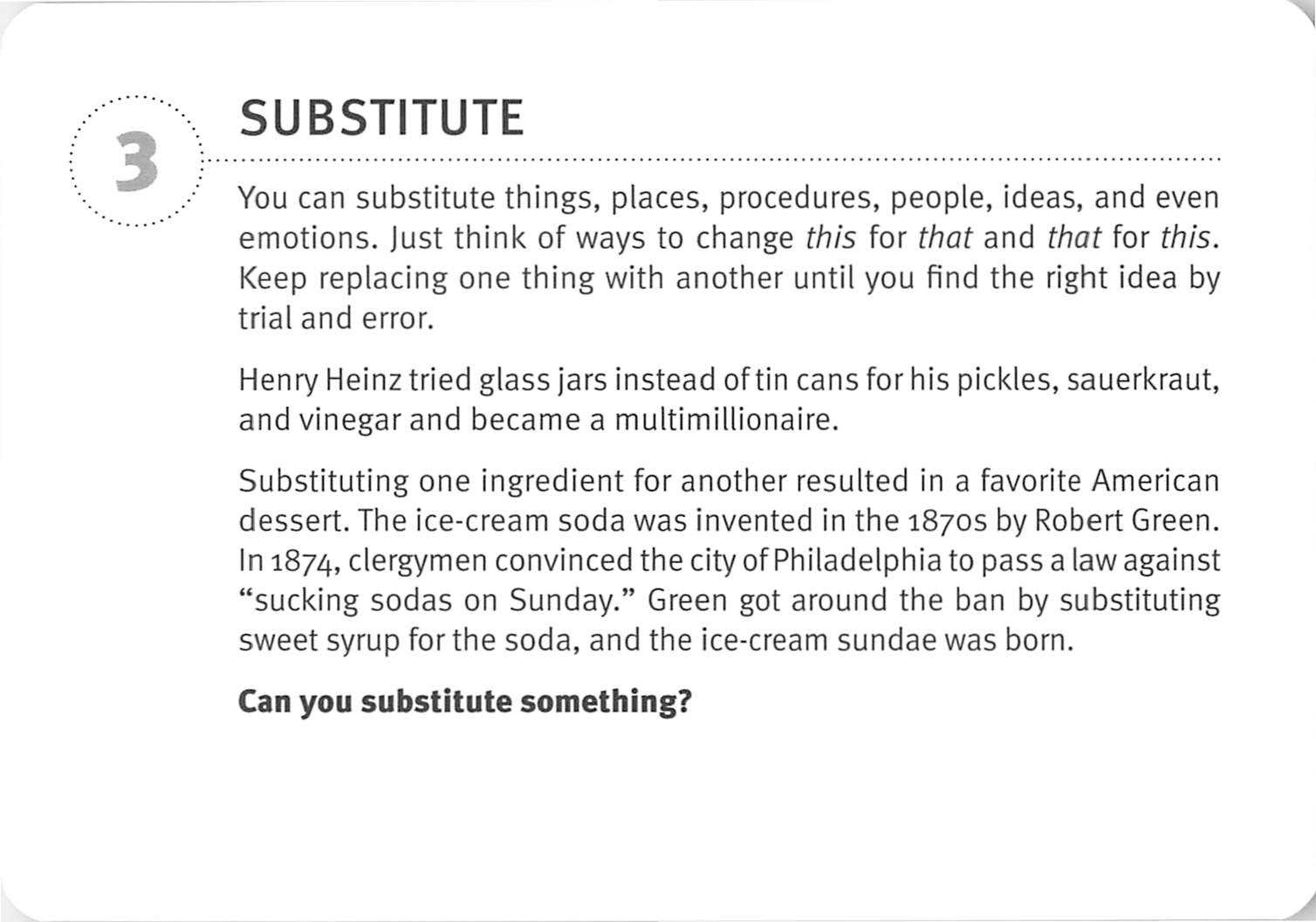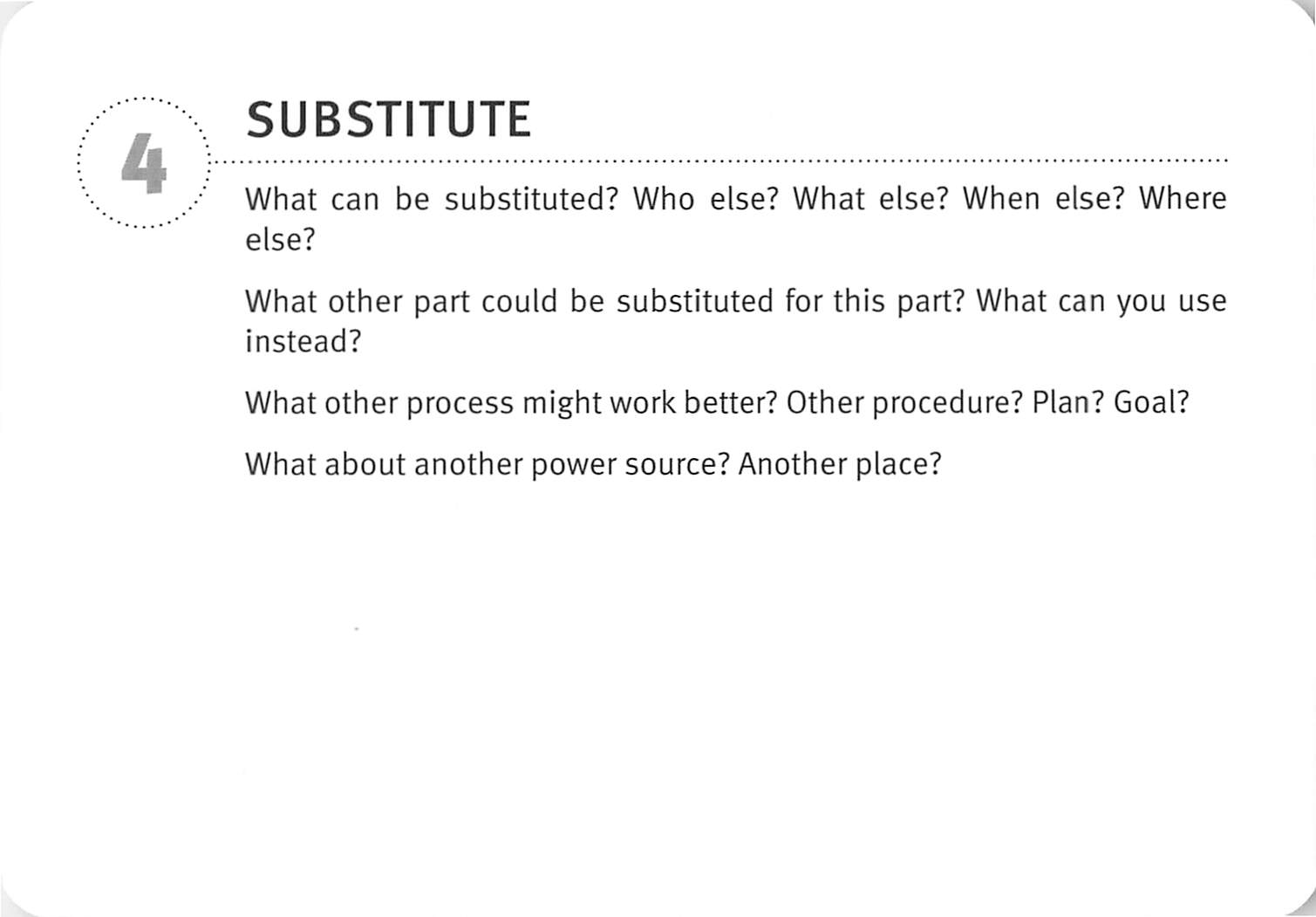[right]E-Book[/right]
[center][large]Whack on the Side of the Head.zip 12.9 MB
https://mega.co.nz/#!INhimRYQ!AjLx09Bij ... LN9mD7fW08[/large][/center]
[justify]Originally Extracted from: ?A Whack on the Side of the Head: How to Unlock Your Mind for Innovation ? by Roger Von Oech Publisher: Warner Books; (October 1983) ASIN: 0446380008[/justify]
 [large]Why be creative ?[/large]
[large]Why be creative ?[/large][justify]I can think of two important reasons. The first is change. When new information comes into existence and circumstances change, it is no longer possible to solve today?s problems with yesterday?s solutions. The second reason for generating new ideas is that it?s a lot of fun. We need a way to generate new ideas. Creative thinking is that means, and like its biological counterpart, it is also pleasurable.
What is creative thinking? What makes the creative person tick? The creative person wants to be a know-it-all. He wants to know about all kinds of things. Because never knows when these ideas might come together to form new ideas. It may happen six months or six years down the road. But he has faith that it will happen.
Mental locks
Why don?t we think something different more often? There are two main reasons. The first is that we don?t need to be creative for most of what we do. The second reason why we don?t think something different more often-most of us have certain attitudes, which lock our thinking into the status quo and keep us thinking more of the same. The author calls these attitudes mental locks. There are ten mental locks in particular which I have found to be especially hazardous to our thinking :
1. ?The Right Answer? ? Much of our educational system has taught us to look for the one right answer. This approach is fine for some situations, but many of us have a tendency to stop looking for alternative right answers after the first one has been found. This is unfortunate because often it?s the second or third, or tenth right answer that is what we need to solve a problem in an innovative way.
Tip #1: A good way to be more creative is to look for the second right answer. There are many ways to pursue this answer, but the important thing is to do it.
Tip #2: The answer you get depends on the questions you ask. Play with your wording to get different answers. One technique is to solicit plural answers. Another is asking questions that whack people?s thinking.
2. ?That?s not logical!? ? Logical is an important creative thinking tool. Its use is especially appropriate in the practical phase of the creative process when you are evaluating ideas and preparing them for action. When you are searching for ideas however, excessive logical thinking can short-circuit your creative process.
Tip #1: For more and better ideas, I prescribe a good dose of soft thinking in the germinal phase, and a hearty helping of hard thinking in the practical phase.
3. ?Follow the Rules? ? Creative thinking is not only constructive, it is also destructive. You often have to break out of one pattern to discover another one. So be responsive to change and be flexible with the rules. Remember, breaking the rules wont necessarily lead to creative ideas, but its one avenue.
Tip #1: Play the revolutionary and challenge the rules ? especially the ones you use to govern your day-today activities.
Tip #2: Remember that playing the revolutionary also has its dangers. Looking back on the decision, sometimes it goes too far.
Tip#3 : Have rule-inspecting and rule-discarding sessions within your organization. You may even find some motivational side benefits in this activity ? finding and eliminating outmoded rules can be a lot of fun.
4. ?Be Practical? ? This world has been built by practical people who knew how to get into a germinal frame of mind, listen to their imaginations, and build on the ideas they found there.
Tip #1: Each of you has an ?artist? and a ?judge? within you. The open-minded attitude of the artist typifies the kind of thinking you use in the germinal phase when you are generating ideas. The evaluative outlook of the judge represents the kind of thinking you use in the practical phase when preparing ideas for execution.
Tip #2: Be a magician. Ask ?what if? questions and use the provocative you find as stepping-stones to new ideas.
Tip #3: Cultivate your imagination. Set aside time everyday to ask yourself what-if questions. Although the likelihood that any given ?what-if? question will lead to a practical idea is not high, the more often you practice this activity the more productive you?ll become.
5. ?Avoid Ambiguity? ? Most of us have heard to ?avoid ambiguity? because of the communication problems it can cause. This is an especially good idea in practical situations where the consequences of such misunderstandings would be serious.
Tip #1: Take advantage of the ambiguity on earth. Look at something and think about what else it might be.
Tip #2: Try to use humour to put you or your group in a creative state of mind.
6. ?To Err is Wrong? ? There are places where errors are inappropriate, but the germinal phase of the creative process isn?t one of them. Errors are a sign that you are diverging from the well-traveled path.
Tip#1: If you make an error, use it as a stepping-stone to some new idea you might not have otherwise discovered.
Tip #2: Strengthen your ?risk muscle?. Everyone has one, but you have to exercise it or else it will atrophy. Make it appoint to take at least one risk every twenty-four hours.
Tip #3: Remember these two benefits of failure: First, if you do fail, you learn what doesn?t work. And second, the failure gives you an opportunity to try a new approach.
7. ?Play is Frivolous? ? If necessity is the mother of invention, play is the father. Use it to fertilize your thinking.
Tip #1: The next time you have a problem - play with it.
Tip #2: If you don?t have a problem, take the time to play anyway. You may find some new ideas.
Tip #3: Make your work place a fun place to be.
8. ?That?s not my area? ? Specialization is a fact of life. To function in this world, you have to narrow your focus and limit your field of view. When you?re trying to generate new ideas, however, such information -handling attitudes can limit you.
Tip #1: Develop the hunter?s attitude, the outlook that wherever you go, there are ideas waiting to be discovered.
Tip #2: Don?t get so busy that you lose the free time necessary for idea hunting. Schedule hunting time into your day and week. Little side excursions can lead to new hunting grounds.
Tip #3: Look for analogous situations. Often problems similar to yours have been solved in other areas.
9. ?Don?t be Foolish? ? Some people are so closely married to their ideas that they put them up on a pedestal. It?s difficult, however, to be objective if you have a lot of ego tied up in your idea.
Tip #1: Occasionally, let your ?stupid monitor? down, play with fool, and see what crazy ideas you can come up with.
Tip #2: Recognize when you or others are conforming or putting down the fool. Otherwise, you may be setting up a ?groupthink? situation.
Tip #3: May the FARCE be with you.
10. ?I?m not creative!?? The world of though and action overlap. What you think has a way of becoming true.
Tip #1: Whack yourself into trying new things and building on what you find ? especially the small ideas. The creative person has the self-faith that these ideas will lead somewhere.[/justify]
